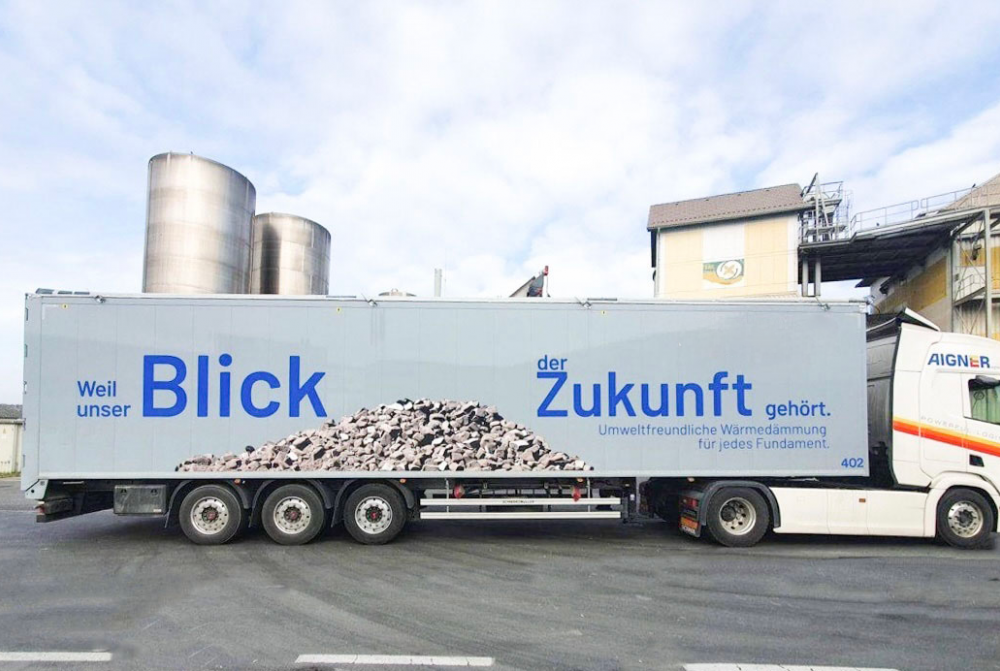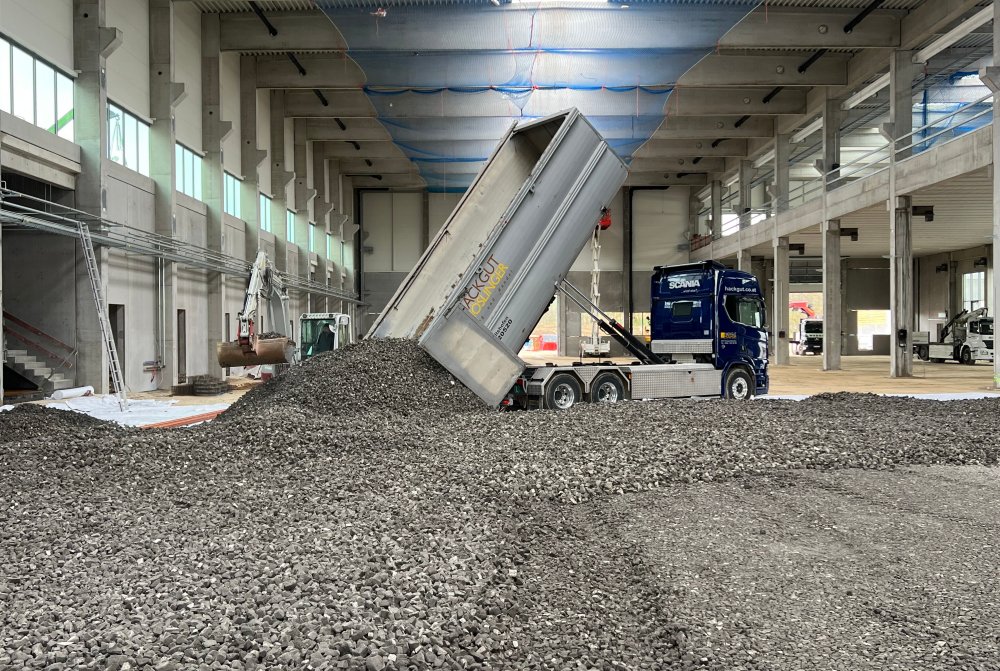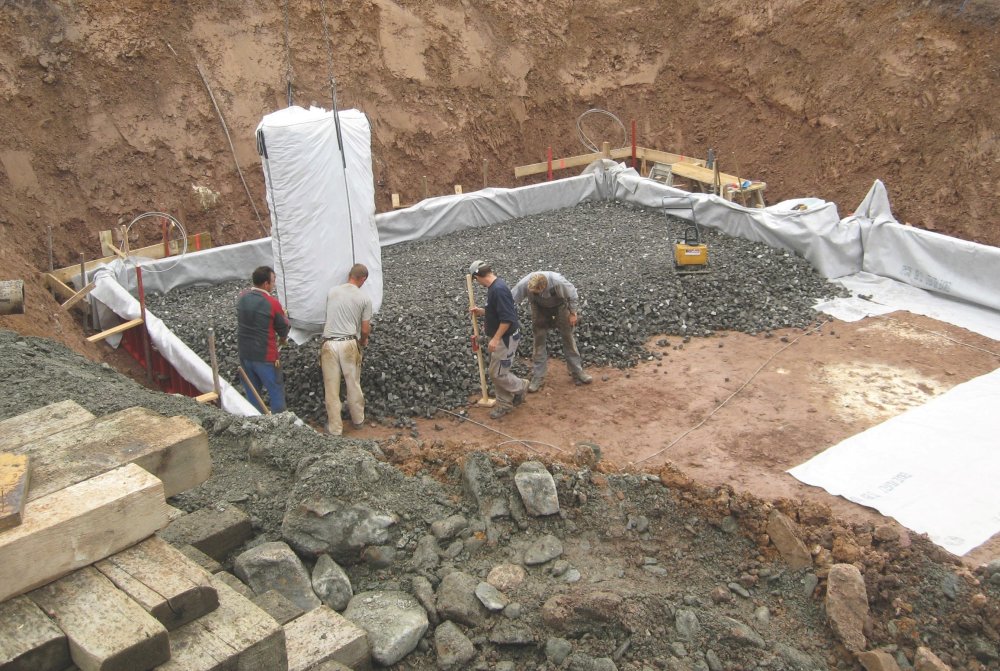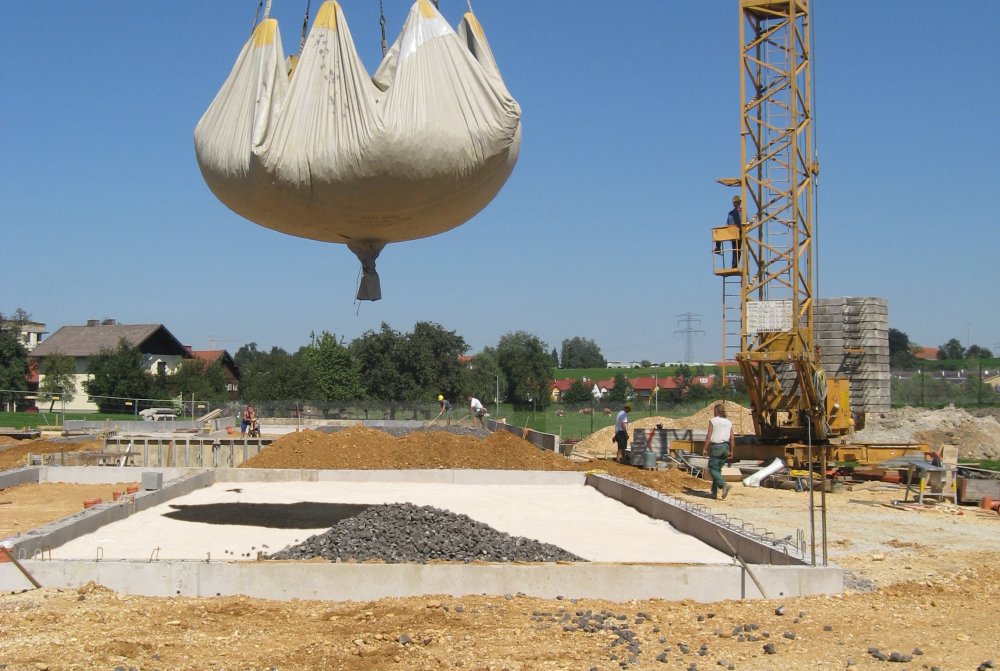veriso products
veriso products
Production of veriso foam glass
raw material - used glass
The valuable secondary raw material is reprocessed via collection systems and thus protects our natural resources.
The valuable raw material glass is therefore reused and the energy initially required for the glass manufacturing process is saved.
The Manufacturing Process of veriso foam glass
The recycled glass is processed into glass powder, mixed with additives and this mixture is foamed on an endless belt in a tunnel kiln. In the continuous furnaces, a kind of foam glass cake is created from used glass powder using the expanding process at around 900 degrees Celsius. The deliberate cooling causes stress cracks to appear in the material, causing the large-scale material to disintegrate. The end result of production is uniformly closed cells.

Area of Application
floor construction
veriso foam glass - load-bearing insulation material compacted
- Replaces cleanliness layer and extruded rigid foam panels
- Enables building without thermal bridges
- With or without strip foundation
- Large-scale use in commercial and industrial properties
Advantages
- Lightweight, load-bearing bulk material with heat-insulating properties
- Higher compressive strength
- Easy and quick to process
- Significantly lower installation height
- Saves time and costs
Area of Application - renovation
veriso foam glass - load-bearing insulation material compacted
- Load-bearing, heat-insulating fill + drainage in one step - reduces construction height
- Floor construction without floor slab - floor renovation
- Core, vault and slope insulation
- Drying out walls and basements
- Thermal renovation of balconies
Advantages
- Light as a feather - low load
- Moisture resistant
- Open to diffusion
- Perfect drainage
- Heavy-duty leveling fill
- Ecological living quality
Installation guidance
The use of veriso foam glass in the capillary fringe of groundwater or water source areas is not allowed. The natural ground must be well permeable to water. In the presence of cohesive or stratified soils, where accumulation or stratum water can occur, a drainage according to DIN 4095 has to be provided.
-
Excavation

Excavate immediately prior to the introduction of veriso foam glass to meet flatness and compressive strength in accordance
with the object-related requirements. Unless otherwise specified, the requirements for flatness and compressive strength should be based on the
principles of ZTVE – StB 94. Lay sewage pipes in pipe trenches and fill with sand on sub-grade level.
-
Lay the GEOTEXTILE

Set up the formwork for veriso foam glass and lay out the flat surface with geo-textile (150g/m²) overlapping. Provide sufficient overhang so that the finished fill can be completely packed later. Position splice bars marking the compacted (final) height of veriso foam glass, at regular intervals.
-
Install veriso foam glass

If veriso foam glass is delivered loose, it is offloaded directly into the excavated pit. Above the installation site, the Big Bags have to be lifted and opened from below with the help of an excavator or crane.
-
Distribute veriso foam glass

At smaller sites, level veriso foam glass uniformly to the marked height using an excavator shovel and rakes. For larger construction sites a mechanical distribution is carried out before the head by a charger or a shovel. Driving over the uncompacted material should be avoided, as precompaction increases material consumption.
-
Compact veriso foam glass

For small sites, compacting shall be performed by a lightweight vibration plate (weight: 80-100 kg, frequency: 85-100 Hz, supporting area: 50 cm, straight running). For areas > 200 m² you can use a soil compactor. A compression exceeding the specifications, results in a higher material consumption, but does not have any negative impact on the technical properties. For design thickness greater than 30 cm, veriso foam glass must be dumped in two layers and each layer has to be compacted. The flatness of the surface has to be made before the compacting process, so that at least a flatness tolerance of +- 3 cm in relation to a length of 4 m is achieved.
-
Lay the separation layer

After completion of compression, the Geotextile is wrapped-up laterally and the entire veriso foam glass layer is covered with a PE-foil to protect against cement residue.
-
Install formwork for foundation slab

Place the formwork for the floor slab directly on the prepared surface and create the floor slab according to the specification. The ring drainage (sewer pipes) is laid around the pit after the formwork has been removed.
-
Closing remark
According to the General Building Inspectorate Approval, a PE film must be placed on the compacted surface of veriso foam glass, except for project-related, justified deviations. Veriso foam glass walkable at a compression ratio of 1.3 to 1. From a compression ratio of 1.6 to 1, careful driving is possible (axle load up to 7.0t). The compacted planum must not be damaged.
-
Evenness of the subgrade
An evenness of the subgrade after compaction of +/-3cm over a measuring length of 4 m can be achieved with veriso foam glass.
Recommended equipment for installation of veriso foam glass

Possibilities for delivery
Delivery of bulk material with a walking floor truck
This form of delivery is suitable for construction sites, which can be easily reached. A walking floor truck cannot tilt, but rather shuffles the material with its moving floor from back to front.
Typical dimensions: LxWxH = 18 x 4 x 2,8 m
Loading capacity: 85 - 95 m³ depending on type of truck
Non steerable axles!

Delivery of bulk material with a container truck
This form of delivery is suitable for narrow access roads. The bulk material is divided into the towing vehicle and a
trailer. Therefore the material can be brought step by step. Please mind: through the minimized quantity and the additional expense, we charge an extra container surcharge.
Typical dimensions towing vehicle: LxWxH = 9 x 4 x 2,8 m
Loading capacity: 76 - 80 m³ depending on type of truck

Delivery packed in Big Bags
We also offer the material in packaged form (disposable packaging):
veriso foam glass Big Bag 1,5 m³
veriso foam glass Big Bag 2 m³
veriso foam glass Big Bag 3 m³

Installation with a dispensation-towel
Especially for stepped, impassable areas, there is the possibility to install the bulk material with the help of a dispensation-towel.
The material is conveyed from the walking floor truck into the towel, spread on the ground with a capacity of 12 m³. The dispensation-towel can be moved with a crane. The distribution of the material happens through the outlet spigot. We gladly provide the dispensation-towel for a daily fee.













